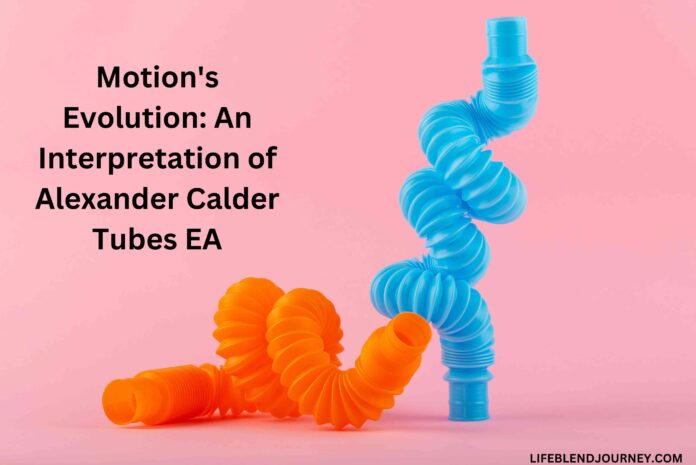Introduction
Have you ever watched a piece of art come alive with movement, almost as if it had a pulse? That’s the magic of Alexander Calder—a man who brought motion to stillness and redefined what art could be. One of his lesser-known yet intriguing concepts is the “Tubes EA,” a testament to his innovation and brilliance. But what makes Alexander Calder Tubes EA so special, and why should we care about it today? Let’s dive in.
Who Was Alexander Calder?
Alexander Calder, born in 1898, was a pioneering American artist best known for creating the mobile—a form of kinetic sculpture. Growing up in a family of artists, Calder’s creativity was nurtured from an early age. Unlike traditional art forms, Calder’s works were designed to move and interact with their surroundings, blending engineering with aesthetics.
The Birth of Kinetic Art
Kinetic art emerged in the early 20th century, aiming to bring movement into the static world of sculpture and painting. Calder played a crucial role in this movement, transforming how audiences perceived and interacted with art. His mobiles, often described as “poetry in motion,” challenged the norms of the art world.
What Are Tubes EA?
Tubes EA refers to Calder’s exploration of cylindrical forms and their movement. These pieces often featured interconnected tubes that rotated, swayed, or oscillated. Think of it as a symphony of motion where each element plays a part in creating a harmonious dance.
The Science Behind the Art
Calder’s Tubes EA pieces weren’t just artistic; they were also deeply scientific. He incorporated principles of physics, such as balance and momentum, to create dynamic sculptures. By carefully calculating weight distribution and pivot points, Calder ensured that his creations moved gracefully and unpredictably—like a gentle breeze swaying a tree.
The Evolution of Motion
Calder’s Tubes EA marked a shift in how motion was perceived in art. Instead of relying on external forces like motors, his works often depended on natural elements like wind or human interaction. This organic movement gave his pieces a life-like quality, making them timeless.
Key Exhibits Featuring Tubes EA
Several renowned museums and galleries have showcased Calder’s Tubes EA, including:
- New York’s Whitney Museum of American Art
- The National Gallery of Art in Washington, D.C.
- Centre Pompidou in Paris
Each exhibit offers a unique perspective on how Calder’s art continues to inspire generations.
Calder’s Artistic Philosophy
Calder believed art should be accessible and engaging. He once said, “Art should not be just a static object of admiration; it should be an experience.” Tubes EA exemplifies this philosophy by inviting viewers to interact, wonder, and feel.
Impact on Modern Art
The influence of Calder’s Tubes EA extends far beyond the art world. Modern installations, interactive sculptures, and even architectural designs draw inspiration from his innovative approach. His work laid the foundation for today’s immersive art experiences.
Tubes EA in Popular Culture
Calder’s creations have appeared in films, advertisements, and even music videos, symbolizing creativity and motion. For instance, some contemporary brands have adopted his style to convey dynamism and innovation.
Preserving Calder’s Legacy
Organizations like the Calder Foundation are dedicated to preserving his works, ensuring that future generations can appreciate his genius. By maintaining and restoring his pieces, they keep his legacy alive.
Conclusion
Alexander Calder’s Tubes EA is more than just art; it’s a celebration of movement, science, and creativity. His work reminds us that art is not confined to frames or pedestals—it can breathe, move, and inspire. As we continue to explore the boundaries of artistic expression, Calder’s legacy serves as a guiding light.
FAQs About Alexander Calder Tubes EA
-
What does Tubes EA stand for?
Tubes EA represents Calder’s experimentation with cylindrical forms and their kinetic properties.
-
Where can I see Tubes EA pieces?
Major art museums like the Whitney Museum and Centre Pompidou often exhibit Calder’s works.
-
How did Calder’s engineering background influence his art?
His studies in mechanical engineering allowed him to design balanced, movable sculptures.
-
Why is Calder considered a pioneer in kinetic art?
He revolutionized sculpture by incorporating movement, making art interactive and dynamic.
-
What makes Tubes EA unique?
Their organic motion and seamless blend of art and science make them timeless and captivating.
